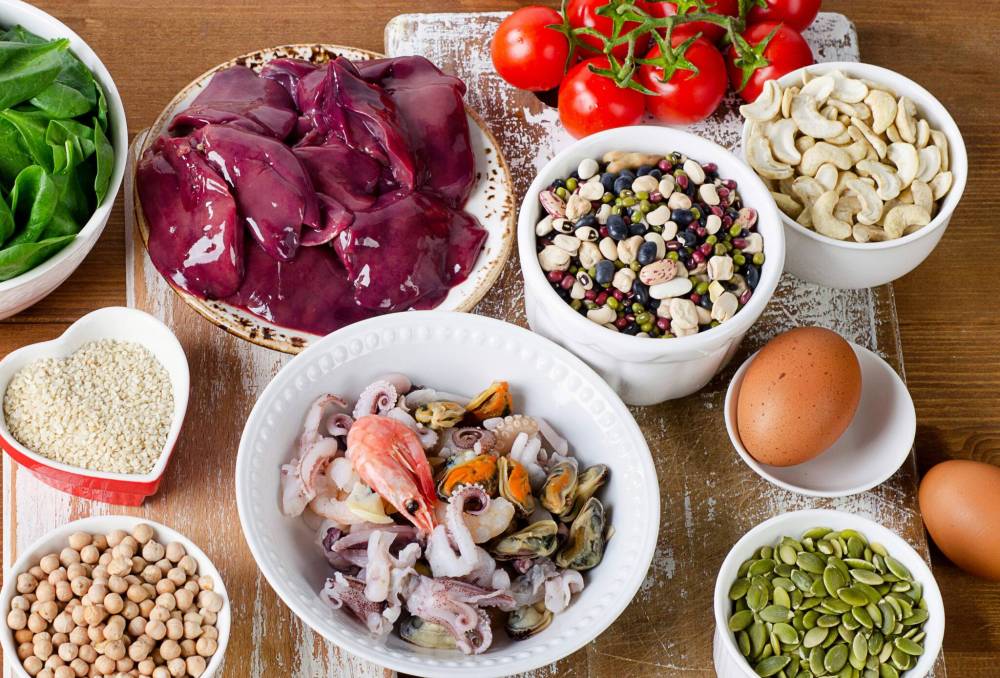Demystifying iron deficiency anemia
Advertisement
Hey there, time traveller!
This article was published 05/07/2023 (827 days ago), so information in it may no longer be current.
Iron is a mineral our bodies need, with both functional and non-functional components. Most iron is considered essential and is involved in many biochemical functions and part of our red blood cells.
Non-functional iron is also called “storage iron” and is found in the liver, spleen, and bone marrow. The best way to determine your iron status is to check your ferritin levels when you get blood work at the physician’s office. At the same time, it would not hurt to also ask for your vitamin B12 level.
Iron deficiency happens when iron intakes fail to meet your body’s needs and when iron stores are depleted. There are different levels of iron anemia. Symptoms of low iron status include extreme fatigue, looking pale, irritability, reduced resistance to infections, depression, headaches, and changed motor and cognitive functions.

Dreamstime
Foods high in iron, including eggs, nuts, spinach, beans, seafood, liver and more.
The recommended daily allowance for iron is 8 mg/day for males over 19 years old and 18 mg/day for females over 19 years old. Both males and females over 50 should get at least 8 mg/day. In pregnancy, 27 mg/day is required.
In food, iron comes in two forms — heme and non-heme iron. Heme iron is much better absorbed than non-heme iron. Sources of heme iron include meat products – beef and liver, in particular – along with poultry and seafood. Non-heme iron is found in many whole grains, legumes, dried fruits, dark leafy greens, seeds and nuts and eggs.
If you have been professionally advised to take an iron supplement, it is best to take a supplement with vitamin C to enhance absorption. This means that you should take a supplement with orange juice, for example, and add tomato, peppers, potatoes, turnips, or broccoli to your meat dishes. Iron blockers or inhibitors, such as tea, coffee, and cocoa, can limit absorption.
Iron deficiency anemia can be present in infants and children. Most healthy, breastfed infants have normal iron stores until six months of age. After six months and/or when they start eating solids, iron-fortified cereals, meat and fish and formulas can impact iron stores.
Children and adults should not arbitrarily decide to start an iron supplement unless a deficiency has been found and increasing iron through food sources has come up short. Too much iron can be toxic. Iron supplements should only be used with guidance from a health professional. Vegetarians should also seek advice on adding iron supplements to their daily routines.
Some iron supplements can cause gastro-intestinal) upset. Ferrous gluconate and ferrous sulfate are the two most recommended supplements. Ferrous gluconate typically contains less elemental iron, so a higher dosage is prescribed. If you have side effects from taking iron supplements, try taking them with meals or in smaller doses. Some people experience constipation when taking iron, but this can be combatted by consuming whole grains, prune juice, dried fruits and drinking water.

Lisa Lagasse
Charleswood community correspondent
Lisa Lagasse is a registered dietitian and community correspondent for Charleswood. Email her at Charleswoodres@gmail.com or find her on X: @LisaRD42324393
Our newsroom depends on a growing audience of readers to power our journalism. If you are not a paid reader, please consider becoming a subscriber.
Our newsroom depends on its audience of readers to power our journalism. Thank you for your support.




